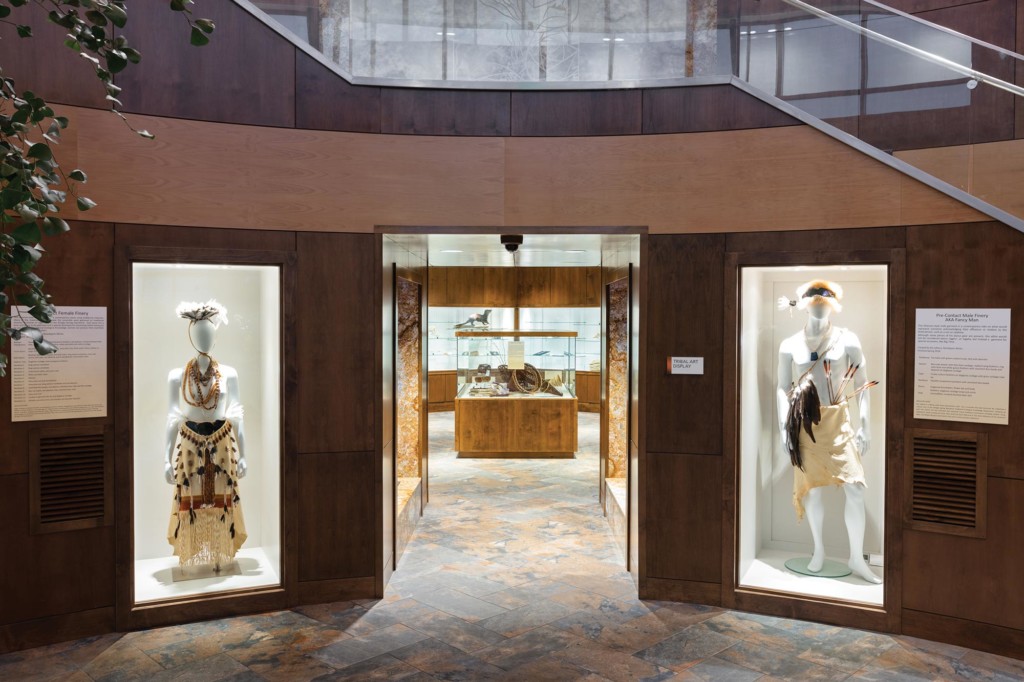
Venturing into the rolling hills and dramatic coastline of Marin County, particularly within the sprawling embrace of Point Reyes National Seashore, offers more than just breathtaking vistas; it provides a unique opportunity to journey back in time, to walk a landscape mapped not by cartographers but by generations of Coast Miwok, whose very existence was intertwined with the land’s bounty. This isn’t just a hike; it’s an immersion into a living larder, a profound exploration of traditional food sources that sustained a vibrant culture for millennia.
The Miwok did not merely inhabit this land; they understood it as a complex, interconnected food system. Their maps weren’t etched on paper, but in their collective memory, passed down through stories, practices, and an intimate knowledge of seasonal cycles and ecological niches. Every grove of oak, every estuary, every meadow and stream represented a carefully managed pantry, a place on their internal map of sustenance.
The Landscape as a Living Larder: A Miwok Food Map
Point Reyes National Seashore, with its diverse ecosystems ranging from dense oak woodlands to expansive grasslands, riparian corridors, and rich coastal estuaries, served as a prime example of the Coast Miwok’s ingenious land management. Each habitat offered specific, vital food resources, meticulously harvested and prepared.

1. The Oak Woodlands: The Acorn Economy
The most prominent feature of the Miwok food map, dominating the inland areas and parts of the coastal hills, was the mighty oak. Coast Miwok territory was rich in various oak species – Coast Live Oak, Black Oak, Tan Oak, Canyon Live Oak – all producing acorns, the cornerstone of their diet. This wasn’t merely a supplementary food; it was the primary carbohydrate and fat source, akin to corn for Mesoamerican cultures or wheat for Europeans.
The acorn harvest was a monumental annual event, typically in late summer and fall. Families would move to specific groves, establishing temporary camps. The process was labor-intensive but deeply communal. Acorns were gathered, often by knocking them from branches with long poles, then dried and stored in granaries (known as chakamas), woven from willow branches and raised off the ground to protect against rodents and moisture.
Transforming acorns into edible food was a sophisticated art. The bitter tannins present in raw acorns had to be leached out. This was achieved by grinding the dried acorns into a fine flour using stone mortars and pestles (many of which, known as bedrock mortars, can still be seen today at sites like Indian Grinding Rock State Historic Park, though Miwok also used portable mortars). The flour was then placed in a shallow basin of sand or leaves, and warm water was repeatedly poured over it, flushing out the tannins. This leaching process, sometimes taking several hours, was crucial. The resulting sweet, nutty flour was then cooked into a nourishing porridge (nuppa or we-wisha), baked into bread, or used to thicken stews. The acorn economy not only provided sustenance but also dictated social structures, seasonal migrations, and trade networks. It was the heart of Miwok life.

2. Estuaries and Coastline: The Marine Harvest
The abundant estuaries, such as Tomales Bay and Drakes Estero, and the rugged Pacific coastline provided a wealth of protein and other nutrients. These watery realms were vital food sources, meticulously managed and harvested.
Shellfish: Clams, mussels, and oysters were staple foods. Miwok people would gather these at low tide, often using digging sticks. Archeological sites along the coast are replete with shell middens – massive piles of discarded shells, testament to centuries of feasting and sustained harvesting. These middens are invaluable "maps" themselves, indicating preferred gathering sites and the species consumed. The Miwok understood the tides, the life cycles of shellfish, and practiced sustainable harvesting techniques to ensure future yields.
Fish: Various fish species, including salmon and steelhead (in larger rivers and streams), rockfish, and flounder, were caught using nets woven from plant fibers, weirs, traps, and bone or shell hooks. Harpoons were used for larger fish and marine mammals. The seasonal runs of anadromous fish were particularly important, offering a concentrated source of protein that could be dried and stored.

Marine Mammals & Seaweed: While less frequent, seals and sea lions were occasionally hunted, providing meat, fat, and hides. Seaweed, rich in minerals, was also gathered and incorporated into the diet, adding flavor and nutrition.
3. Grasslands and Meadows: Seeds, Roots, and Game
Beyond the oaks and the ocean, the expansive grasslands and meadows of Marin County offered a diverse array of plant and animal resources.
Seeds: Numerous native grasses and flowering plants produced edible seeds. Tarweed, chia, and various wild oat species were carefully gathered. Seeds were often parched, then ground into flour or consumed whole, providing essential fats and proteins. The subtle art of seed collection involved knowing precisely when each species was ripe and how to efficiently gather and process them.
Roots and Bulbs: The ground itself yielded sustenance. Camas lilies, wild onions, soaproot, and various tubers were dug using digging sticks. These provided carbohydrates, vitamins, and minerals. Soaproot, beyond its culinary use, also served as a natural soap and a fish poison (pounded and put into still pools to stun fish, making them easy to collect).
Game: Deer (especially Black-tailed Deer), elk (Tule Elk, once abundant), rabbits, squirrels, and various birds (quail, waterfowl) were hunted using bows and arrows, traps, and snares. Hunting was a skilled endeavor, requiring deep knowledge of animal behavior, tracking, and the landscape. The entire animal was utilized – meat for food, hides for clothing and shelter, bones for tools, sinews for bindings.

4. Riparian Areas and Wetlands: Waterfowl and Aquatic Plants
The freshwater streams, rivers, and wetlands, though less extensive in some parts of Marin, were crucial for water, fish, and aquatic plants. Tules (bulrushes) were particularly versatile, their roots providing food, and their stalks used for weaving mats, baskets, and even boats (tule balsas). Waterfowl, such as ducks and geese, were hunted in these areas.
Experiencing the Miwok Food Map Today: A Traveler’s Journey
For the modern traveler, understanding the Miwok food map transforms a visit to Point Reyes National Seashore and surrounding Marin County from a scenic drive into a profound cultural and ecological expedition.
Visit Kule Loklo: Begin your journey at Kule Loklo, a Coast Miwok cultural exhibit and replica village located within Point Reyes National Seashore. This living museum offers a tangible connection to Miwok life, showcasing traditional structures, tools, and a deep respect for the environment. While not a direct "food source," it provides context for their relationship with the land and its resources.
Observe the Oaks: As you hike through the oak woodlands, look at the majestic trees with new eyes. Imagine the autumn harvest, the crackle of fallen acorns underfoot, the communal effort of gathering and processing. Consider the sheer volume of acorns needed to sustain a community and the meticulous knowledge required to turn them into flour. Reflect on how these "food factories" shaped Miwok society.
Explore the Estuaries: Kayak or paddleboard in Tomales Bay or Drakes Estero. While commercial oyster farms now dot these waters, they occupy the same rich grounds that once provided sustenance for the Miwok. Imagine the Miwok women and men wading into the shallows, expertly digging for clams, or setting fish traps. Consider the ecological balance they maintained, ensuring the long-term health of these vital ecosystems.
Walk the Coastal Trails: As you traverse the coastal bluffs and beaches, observe the native plant life. While direct foraging is often restricted in national parks and requires extensive knowledge, simply identifying plants like California Bay Laurel (whose nuts were also consumed after processing) or observing where wild berries might grow provides a deeper understanding. Look for shell middens, visible as layers in eroded banks, silent witnesses to centuries of feasting.
Connect with Local Food: While it’s challenging to directly taste Miwok traditional foods outside of specific cultural events, visiting local farmers’ markets in Marin County can offer a contemporary connection. Seek out native plant nurseries or specialty stores that might carry indigenous-inspired ingredients or wild-harvested items (always ensuring ethical and legal sourcing). Some local chefs are beginning to explore indigenous ingredients, offering a modern interpretation of ancient flavors.
Mindful Observation and Respect: The most profound way to engage with the Miwok food map is through mindful observation. Understand that every element of the landscape was once a resource, carefully managed and respected. This perspective fosters a deeper appreciation for the land, its history, and the enduring legacy of its first stewards. It encourages questions about sustainability, traditional ecological knowledge, and our own relationship with food.
Conservation and Legacy
The Miwok’s profound understanding of their food sources wasn’t merely about survival; it was about thriving in harmony with the environment. Their practices – controlled burns to encourage specific plant growth, selective harvesting, seasonal rotations – were forms of sophisticated land management that maintained biodiversity and productivity. Their maps were not static lines on a page, but a dynamic, lived understanding of the interconnectedness of all life.
Today, as we confront challenges of food security and environmental degradation, the lessons embedded in the Miwok food map are more relevant than ever. Preserving these landscapes, protecting native plant and animal species, and supporting indigenous cultural heritage are not just acts of historical appreciation, but vital steps towards a more sustainable future.
A journey through Marin County with the Miwok food map in mind transforms a simple vacation into an educational pilgrimage. It invites us to see the landscape not as an untouched wilderness, but as a meticulously managed garden, a testament to generations of human ingenuity, ecological wisdom, and an unwavering connection to the land that sustained them. It’s a journey that feeds not just the body, but the soul, offering a glimpse into a profound way of life that continues to resonate today.
